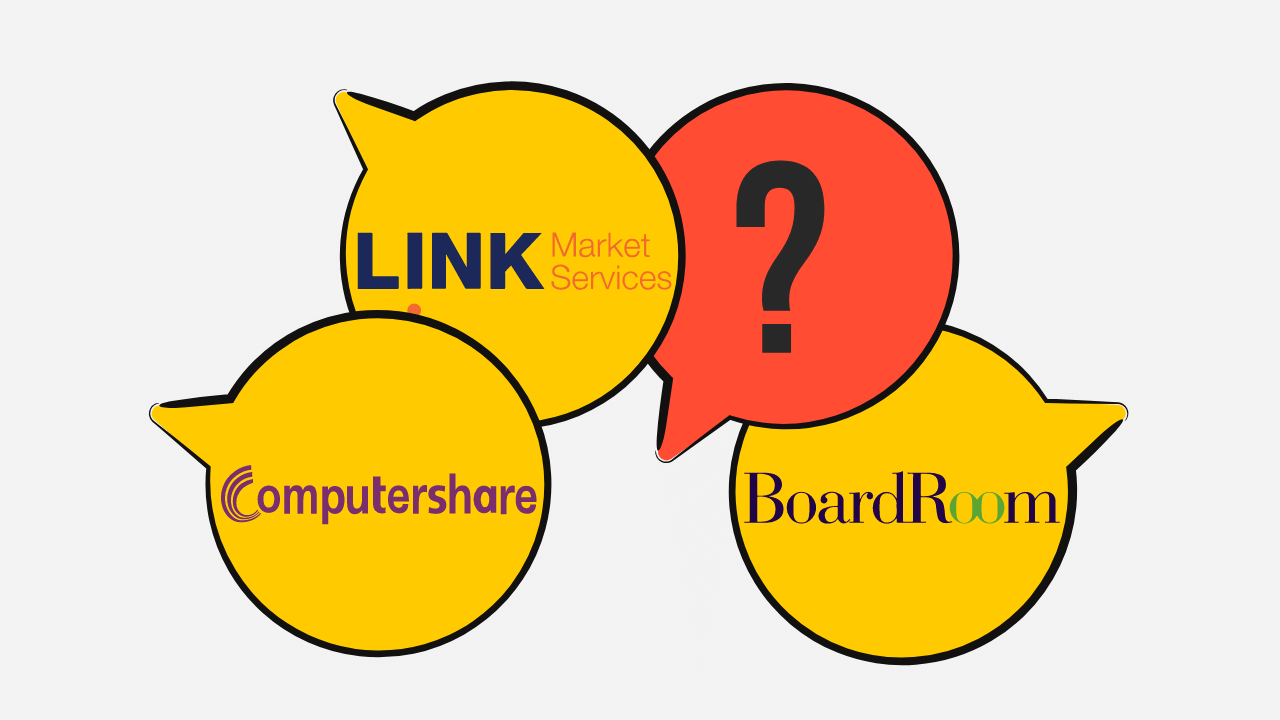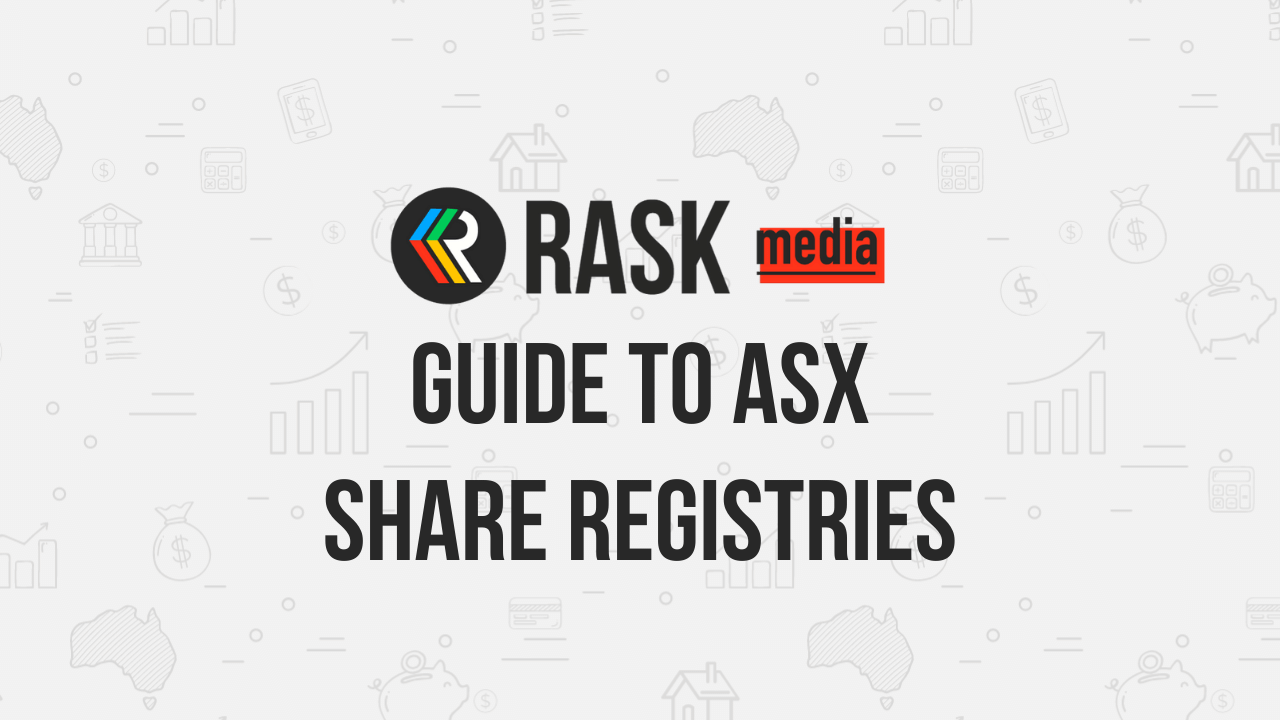In our guide to using your share registry, I’ll explain all of the need-to-know tax information, AGM voting and information you need to be an informed shareholder (or just make your life easier!).
Now that you’re a shareholder you have certain benefits, like voting at Annual General Meetings (AGMs), receiving dividends (if applicable) and getting a copy of the company’s annual report (although anyone can access that online).
However, since your company is hopefully busy growing the business, they hand off all the shareholder administration duties to an external share registry to run the show.
Common names include Computershare, Link Market Services and BoardRoom, although there are other smaller players as well.
Why do I need a share registry account?
The share registry will be your hub of administration, where you can set up dividend reinvestment plans (DRPs), vote and change your communication preferences. You can also download distribution and tax statements that you’ll need at the end of the financial year.
One of the most important things you can do with a share registry account is to ensure your tax file number (TFN) is recorded, otherwise you may find yourself having tax withheld on any dividends paid to you (and you’ll need to remember to claim that back on your tax return).
How do I find my share registry?
In Australia, Link and Computershare are the biggest registries but there are also others available. The right share registry will depend on the company/ETF you have invested in. If you have received paperwork from your shares or ETF, review it to find your registry information and where to go to register for a DRP.

You can find your share registry by following any of these steps:
- Visit the website of the company or ETF you’re invested in and find their shareholder section or investor relations section. Search this section of the website, it will tell you who the registry is and what steps to take.
- Read the company’s annual report (hint: use CTRL+F to search the document for ‘registry’). It’s usually written at the start or end of the annual report.
- Look up the company or ETF on the ASX website and scroll down to the about company section.
Never give out your CHESS HIN (holder identification number) unless you’re certain the company is legitimate. ~ The invisible investing angel on your shoulder.
Why can’t I keep all my shares & ETFs in one registry account?
Unfortunately, you have to use the share registry that the company chooses. Given there’s a range of share registry companies all competing for the business of ASX listed shares and ETFs, you’ll have to get used to navigating between them (and keeping track of all your login details).
Why does the ASX and share registry keep sending me mail?
There are three main types of mail you’ll start to receive as an ASX investor:
- Statements on a monthly basis from the ASX for each investment or sale you make – these ones can’t be turned off sadly. The ASX is working on changing this from 2022 onwards (thank goodness).
- Once-off welcome information from the share registry when you make a new investment, inviting you to access the company via the share registry and change your communication preferences.
- Ongoing administration from the share registry in relation to your holding (think annual reports, dividend statements, voting, share purchase plans etc.). This can be changed to email only via the share registry, which is highly recommended (you’ll be reeling in the paperwork otherwise and may miss a time sensitive announcement).
What is a CHESS statement?
Let’s start with one of the first documents you’ll receive in the post because while you can buy shares at the click of a button, it’s still a bit manual in the back end.
CHESS stands for Clearing House Electronic Subregister System, which simply means that it’s our Australian clearing system that settles share sales made via the ASX. CHESS will send you this statement in the post, confirming that the shares have been allocated to you.
It is good practice to glance at the statement to double-check your details, but other than that, they can be largely ignored.
Should I keep my paper statements?
You might also receive documents in the post from your new share registry asking you about your payment, tax and communication preferences. It’s much easier to just head into the share registry to update these details but it’s totally fine to fill in and send back those forms as well.
If you elect to keep receiving all your documents via post you’ll just need to be super careful to update your address every time you move or you might lose track of important details.
If you’re lucky, your broker may do the heavy lifting for you here and actually send across your details to the share registry but it doesn’t always happen so it is better to check.
What records do I need to keep track of for tax purposes?
This video explains 5 essential tips for share investing, including managing dividends and tax.
Now the fun bit. If you haven’t heard yet, you must pay tax on any capital gains made when you sell or receive a dividend from your shares in Australia.
Typically, as an investor you should keep track of the purchase date, purchase price, ticker code and total purchase cost (cost base). It may also be helpful to keep any statements received via email in a specific folder, so they’re accessible at tax time. You can also download dividend statements in your share registry account (once they’re issued).
Common methods of tracking all this for tax time include using Excel, Google Sheets, and Sharesight.
Updating my details: banks accounts
This is an important step, because if the company or ETF you invest in pays a dividend, and you don’t have any bank details on file, you won’t receive those funds.
It’s your responsibility to ensure your bank details are entered correctly as the share registry won’t be responsible for any funds sent to the wrong account.
Updating my details: Dividend Reinvestment Plans (DRPs)
One key feature to watch out for is whether the company or ETF offers a DRP, or Dividend Reinvestment Plan. This is an option where you can choose to receive additional shares/units in your investment, rather than receiving a cash payment. This is a hands-off way to grow your investments over time and take full advantage of the effects of compounding.
To ‘turn on’ a DRP (if it’s available), you will need to head over to the relevant share registry for your share/ETF (e.g. Computershare or Link Market Services) and select the DRP option. This means that any future dividends issued will be paid to you in the form of additional shares or units depending on the product.
Interested in learning more about the advantages and disadvantages of using a DRP? Read this article!
Updating my details: Contact details and communication preferences
Finally, updating your contact information and communication preferences is an important step to reduce the amount of paperwork you receive. Plus, you’ll be able to stay up to date with the company much more quickly via email.
Voting & company Annual General Meetings (AGMs)
When we buy shares we often forget that it means we now have a small, but not entirely insignificant, level of ownership in the company.
It’s easy to forget that behind the share price, there are employees, a board of directors, products, services and countless decisions to be made every day.
Generally, the company deals with all of the day to day operations and shareholders won’t know one way or the other. (Think of the madness that would ensue if Telstra had to check with their millions of shareholders every time they wanted to hire a new employee).
However, occasionally the share registry will contact you regarding issues you are able to vote on and AGMs you can attend as a company shareholder.
You can also learn more about the company through its annual report and regular reporting to the ASX throughout the year.
Learn more about voting and company AGMs in this article.
My number #1 share registry tip
Update these details every six months by setting up a calendar reminder for yourself! Plus, set up a Google/Hotmail/Apple ‘filter’ in your email, to send all documentation >> “investment admin” sub folder.

